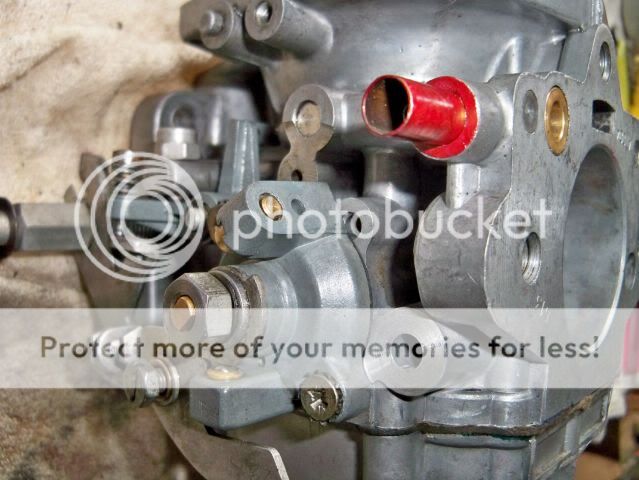Hi, I recently purchased a 1975 Triumph TR6, very nice original car. After driving the car around the neighborhood, I have noticed that under acceleration at low rpms (1000-1500rpm) the car often coughs like it wants to stall and will also backfire out through the carbs. Once above 1500rpm the car feels good with no hesitation or backfiring. I am looking for suggestions on what to do next to resolve this issue. Please note that the pollution equipment has been removed from the car and all vacuum lines have been plugged.
These are the things I have done so far;
- removed air cleaner
- removed the spark plugs, and noticed that they are running extremely lean showing a white deposit, signifying mixture is way to lean. I re-gapped to 0.25, cleaned and reinstalled.
- replaced the fuel filter (how much fuel should be in fuel filter when the engine is running?)
- replaced a rear flex fuel line which was leaking
- this car has a petronix electronic ignition system with flamethrower coil, I tried removing the vacuum advance line that goes to the rear carb intake manifold. This seemed to help a little bit, backfiring is not as prominent when this is disconnected.
- adjusted the mixture screws (fine tuning) on the side of each carb, were reset to '0' and were turned out 3 turns. Made little difference.
- the pistons in the carbs move freely up & down, the diaphragms have been replaced and the previous owner says the carbs have been rebuilt. (Professionally or by home mechanic??)
This is what I was going to attempt to try next to eliminate the backfire;
1. Check for adequate gas flow to carbs
2. Synchronize carbs
3. Check the iginition timing (not sure how to do this with an electronic iginition.... is it the same as if it had points & condenser?
4. Check manifold for cracks or leaks using aerosl carb cleaner spray.
5. Reset the jets in the carbs for a richer mixture.
Any suggestions would be greatly appreciated!
These are the things I have done so far;
- removed air cleaner
- removed the spark plugs, and noticed that they are running extremely lean showing a white deposit, signifying mixture is way to lean. I re-gapped to 0.25, cleaned and reinstalled.
- replaced the fuel filter (how much fuel should be in fuel filter when the engine is running?)
- replaced a rear flex fuel line which was leaking
- this car has a petronix electronic ignition system with flamethrower coil, I tried removing the vacuum advance line that goes to the rear carb intake manifold. This seemed to help a little bit, backfiring is not as prominent when this is disconnected.
- adjusted the mixture screws (fine tuning) on the side of each carb, were reset to '0' and were turned out 3 turns. Made little difference.
- the pistons in the carbs move freely up & down, the diaphragms have been replaced and the previous owner says the carbs have been rebuilt. (Professionally or by home mechanic??)
This is what I was going to attempt to try next to eliminate the backfire;
1. Check for adequate gas flow to carbs
2. Synchronize carbs
3. Check the iginition timing (not sure how to do this with an electronic iginition.... is it the same as if it had points & condenser?
4. Check manifold for cracks or leaks using aerosl carb cleaner spray.
5. Reset the jets in the carbs for a richer mixture.
Any suggestions would be greatly appreciated!

 Hi Guest!
Hi Guest!

 smilie in place of the real @
smilie in place of the real @
 Pretty Please - add it to our Events forum(s) and add to the calendar! >>
Pretty Please - add it to our Events forum(s) and add to the calendar! >> 

